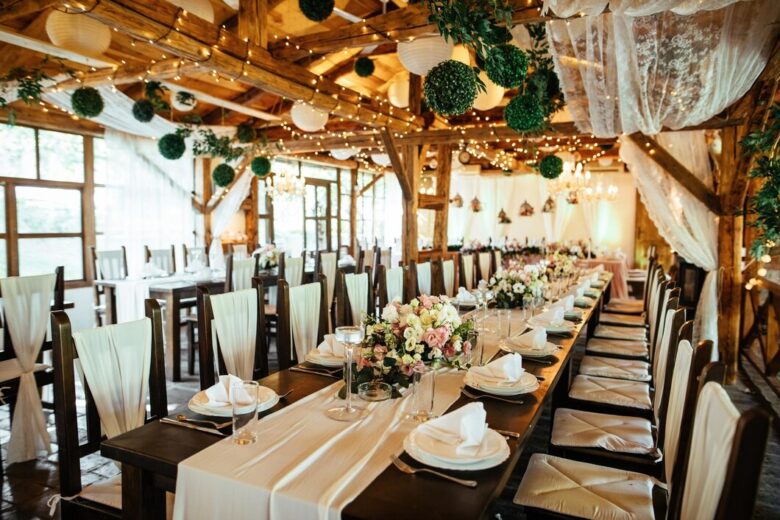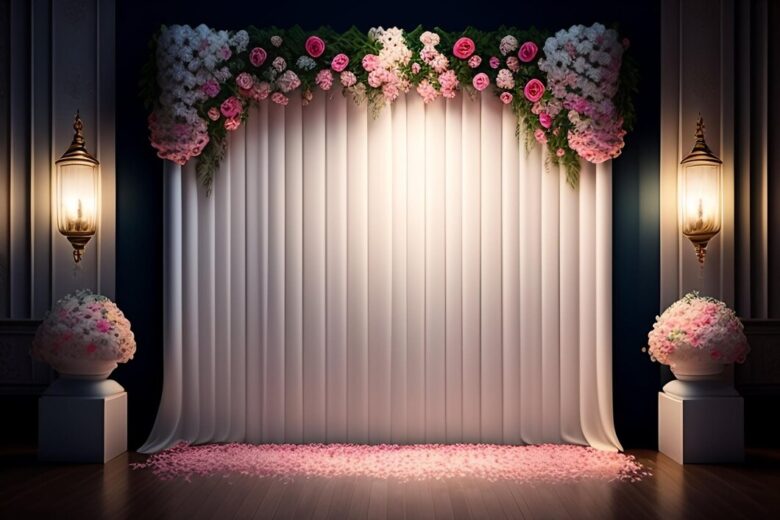Weddings have been a part of human culture for centuries, but many fascinating facts about this cherished tradition are still unknown to most people. From ancient customs to surprising modern trends, weddings are rich in history, symbolism, and even mystery. Below are ten truly fun and unexpected wedding facts that will change how we look at these beautiful ceremonies—and give you interesting stories to share at your next wedding event.
The First Wedding Rings Were Made of Hemp or Reed
Long before diamonds became a symbol of eternal love, ancient Egyptians crafted wedding rings from hemp, reeds, or papyrus. These fragile materials were twisted into circular bands, symbolizing eternity and the unbroken cycle of life. However, since they wore out quickly, couples eventually moved to more durable materials like leather, bone, and eventually metal.
Interestingly, the circle itself was what mattered most—not the material. It represented infinity and the joining of two lives forever.
Brides Didn’t Always Wear White
The white wedding dress, now a universal symbol of purity and elegance, only became popular after Queen Victoria’s wedding in 1840. Before her, brides typically wore their best dress, regardless of its color. In fact, red was once the go-to color in many cultures, including China and India, symbolizing luck and prosperity.
Queen Victoria’s bold choice to wear white inspired generations of women and began a tradition that now defines Western bridal fashion. Yet in many places, brides still choose gold, blue, or vibrant multi-colored attire for their special day.
The Origin of the Wedding Cake Comes from Ancient Rome
Today’s grand multi-tiered wedding cakes with intricate sugar flowers and fondant have evolved from a much simpler (and stranger) tradition. In ancient Rome, guests broke a loaf of bread over the bride’s head to symbolize fertility and good fortune.
During medieval times in England, guests stacked small cakes into a pile, and the couple would try to kiss over the stack. If successful, it was believed they’d have a lifetime of prosperity.
The tiered cake we know today didn’t become popular until the 19th century, modeled after St. Bride’s Church in London, which features a multi-tiered spire.
June Weddings Have a Surprising History
June remains the most popular wedding month globally, and the reason may surprise you. In ancient Rome, June was sacred to Juno, the goddess of marriage and childbirth. Getting married during her month was thought to ensure fertility, happiness, and protection for the couple.
There’s also a practical reason. In medieval Europe, people usually took annual baths in late spring or early summer. Getting married in June meant the bride and groom were at their cleanest, and flowers (used to mask odor) were in full bloom!
The Veil Was Originally Meant to Ward Off Evil Spirits
While veils are now a symbol of modesty or style, their origin is deeply rooted in superstition. Ancient Greeks and Romans believed that evil spirits would try to harm the bride, and the veil acted as a protective shield.
In arranged marriages, veils also served to hide the bride’s face until the deal was sealed, ensuring the groom couldn’t back out based on looks.
Today, many brides use veils as a fashion statement or to honor religious traditions, but the original purpose was purely spiritual protection.
Grooms Used to Kidnap Their Brides
The term “best man” has a darker origin than most would imagine. In early Germanic tribes, if a man wanted to marry a woman from another village and her family didn’t agree, he would kidnap her. The “best man” was the strongest, most trusted companion, whose job was to help fight off angry relatives during the kidnapping and stand guard during the wedding.
Today’s best men might give a speech and hold the ring, but their role was once much more dangerous and physically demanding.
The Bouquet Toss Was Originally a Distraction
In medieval England, wedding guests believed that touching the bride would bring good luck. As a result, overexcited guests would often chase the bride, trying to tear pieces from her dress or grab accessories.
To escape the chaos, the bride would toss her bouquet into the crowd and use the distraction to run away with her new husband.
Today, the bouquet toss is a lighthearted tradition meant to bless the next person to get married, but it began as a clever escape plan!
Wearing a Wedding Ring on the Left Hand Has Ancient Roots
Most Western cultures wear the wedding ring on the left hand’s fourth finger, a tradition that traces back to the ancient Egyptians and Romans. They believed a special “vena amoris” or vein of love ran directly from that finger to the heart.
While modern science disproves this theory, the symbolic gesture remains powerful and romantic. In some cultures, such as Russia and India, wedding rings are worn on the right hand, but the meaning stays the same.
Bridal Parties Were Meant to Confuse Evil Spirits
The tradition of bridesmaids and groomsmen wearing matching outfits didn’t start for fashion reasons. In Roman times, bridesmaids dressed like the bride, and groomsmen dressed like the groom to confuse evil spirits who might try to harm the couple.
This way, spirits wouldn’t know who the actual bride and groom were and would leave them alone.
It’s also said that in some cultures, the bridal party helped protect the couple from physical threats, like rival suitors or jealous family members.
The Longest Recorded Wedding Veil Was Longer Than 60 Football Fields
In 2018, a bride in Cyprus broke the world record by wearing a veil that stretched 22,843 feet (6,962.6 meters). That’s more than 60 football fields in length!
This epic display took over three months to create and required a full team to assist during the event. While most brides opt for shorter, manageable veils, this extravagant act showed just how far some people are willing to go to make a memorable statement.
Bonus: Fun Wedding Superstitions from Around the World
- India: The bride is often adorned with henna (mehndi) patterns on her hands and feet, which are believed to bring good luck and fertility.
- Italy: Guests at Italian weddings traditionally shout “Evviva gli sposi!” which means “Long live the newlyweds!”
- Sweden: If the bride or groom leaves the room during the reception, the guests are allowed to kiss the remaining partner.
- Ireland: It’s considered bad luck to marry on a Saturday.
- Mexico: The couple is often encircled with a lasso (el lazo) in a figure-eight shape, symbolizing infinity and unity.
Conclusion: Weddings Are Rich with History, Humor, and Heart
From ancient superstitions to modern records, weddings are more than just ceremonies—they are the living history of love. They carry traditions that unite families, reflect culture, and create memories that last a lifetime. Whether you’re a guest, a bride, a groom, or an event decorator, knowing these fun wedding facts can add depth and delight to the big day.
So next time you attend a wedding, remember: every veil, bouquet, and cake slice carries centuries of fascinating stories behind it.
Caroline Mureithi founded Swanky Events in 2016 with a passion for creating unforgettable experiences through exquisite event planning and decoration. Based in Portland, Oregon, Swanky Events specializes in weddings, corporate events, fundraisers, and social gatherings. Caroline and her team are dedicated to turning visions into reality, ensuring every detail exceeds expectations. Visit our Facebook Page.



